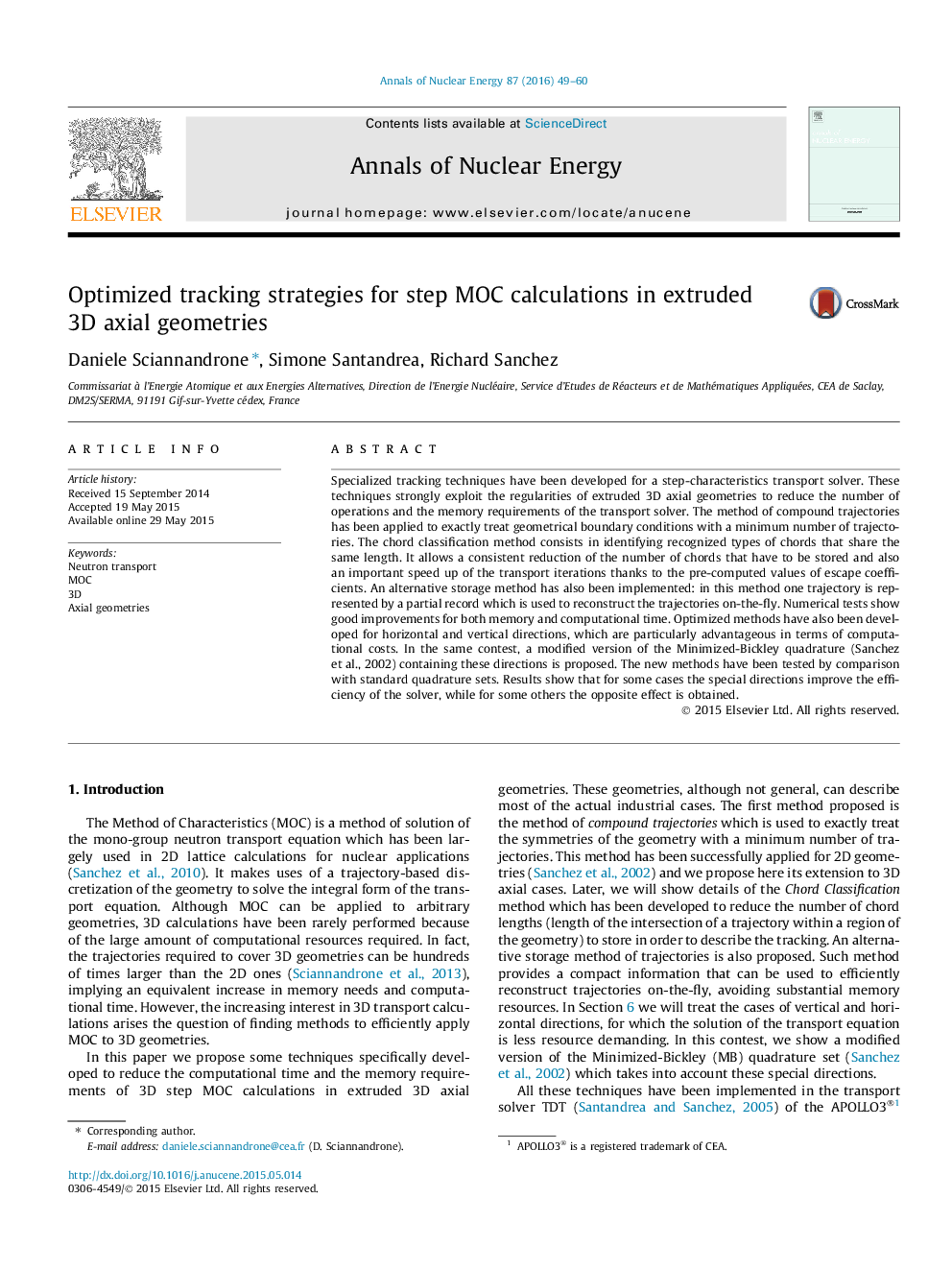| Article ID | Journal | Published Year | Pages | File Type |
|---|---|---|---|---|
| 8067994 | Annals of Nuclear Energy | 2016 | 12 Pages |
Abstract
Specialized tracking techniques have been developed for a step-characteristics transport solver. These techniques strongly exploit the regularities of extruded 3D axial geometries to reduce the number of operations and the memory requirements of the transport solver. The method of compound trajectories has been applied to exactly treat geometrical boundary conditions with a minimum number of trajectories. The chord classification method consists in identifying recognized types of chords that share the same length. It allows a consistent reduction of the number of chords that have to be stored and also an important speed up of the transport iterations thanks to the pre-computed values of escape coefficients. An alternative storage method has also been implemented: in this method one trajectory is represented by a partial record which is used to reconstruct the trajectories on-the-fly. Numerical tests show good improvements for both memory and computational time. Optimized methods have also been developed for horizontal and vertical directions, which are particularly advantageous in terms of computational costs. In the same contest, a modified version of the Minimized-Bickley quadrature (Sanchez et al., 2002) containing these directions is proposed. The new methods have been tested by comparison with standard quadrature sets. Results show that for some cases the special directions improve the efficiency of the solver, while for some others the opposite effect is obtained.
Keywords
Related Topics
Physical Sciences and Engineering
Energy
Energy Engineering and Power Technology
Authors
Daniele Sciannandrone, Simone Santandrea, Richard Sanchez,
